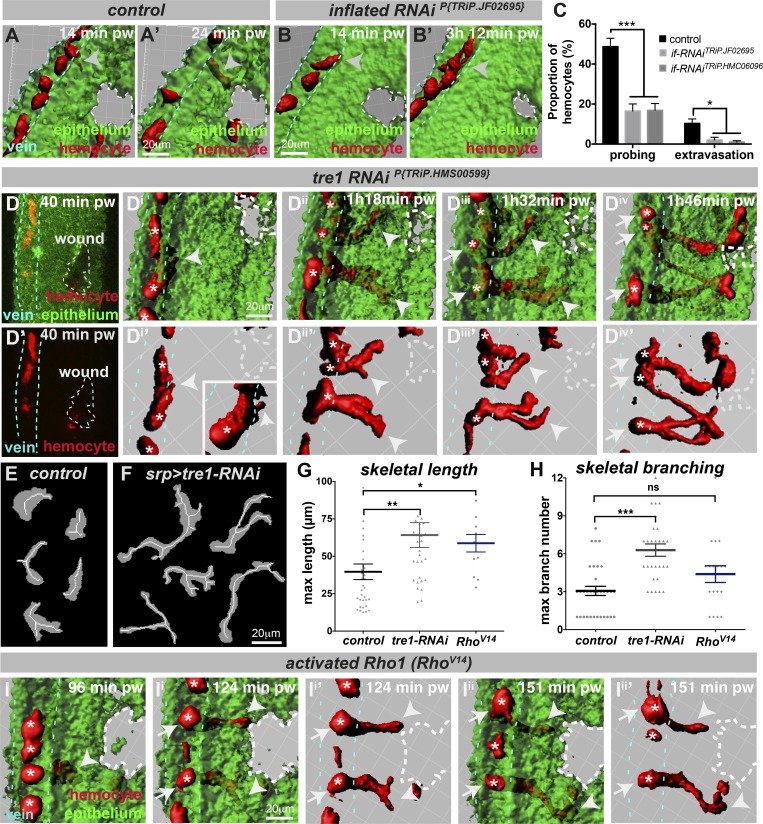Figure 4.
Hemocyte extravasation requires integrins and the GPCR Tre1. (A–C) IMARIS visualization of control (A) and hemocyte-specific inflated-RNAiP{TRiP.JF02695} hemocytes (B, using srp-Gal4) in 75-h APF pupal wings. Unlike controls (red, arrowheads, A and A’), hemocytes with inflated-RNAiP{TRiP.JF02695} exhibit defects in vessel extravasation (arrowheads, B and B’, and quantified in C). (D–H) Hemocytes with tre1-RNAiP{TRiP.HMS00599} (using srp-Gal4) become significantly elongated and branched during extravasation (arrowheads, Dii and Diii, and morphology quantification, E–H) and fail to retract their vessel-bound tails (arrows, Div). Arrowhead in Di indicates hemocyte probing of the vessel wall. Arrows in Diii indicate hemocyte tails that are retained within the lumen of the vessel. (I) Hemocytes with activated Rho1 (srp>RhoV14) exhibit similar extravasation defects, becoming significantly elongated (G and arrowheads, I) and failing to retract their tails from the vessel (arrows, I). Asterisks (white) indicate individual hemocytes. (C, G, and H) Data are represented as mean ± SEM; ns, not significant; *P < 0.05, **P < 0.01, and ***P < 0.001 via multiple t tests (C) or one-way ANOVA (G and H), both with Sidak’s correction for multiple comparisons. pw, post-wounding. Also see Fig. S3 and Videos 8 and 9.

